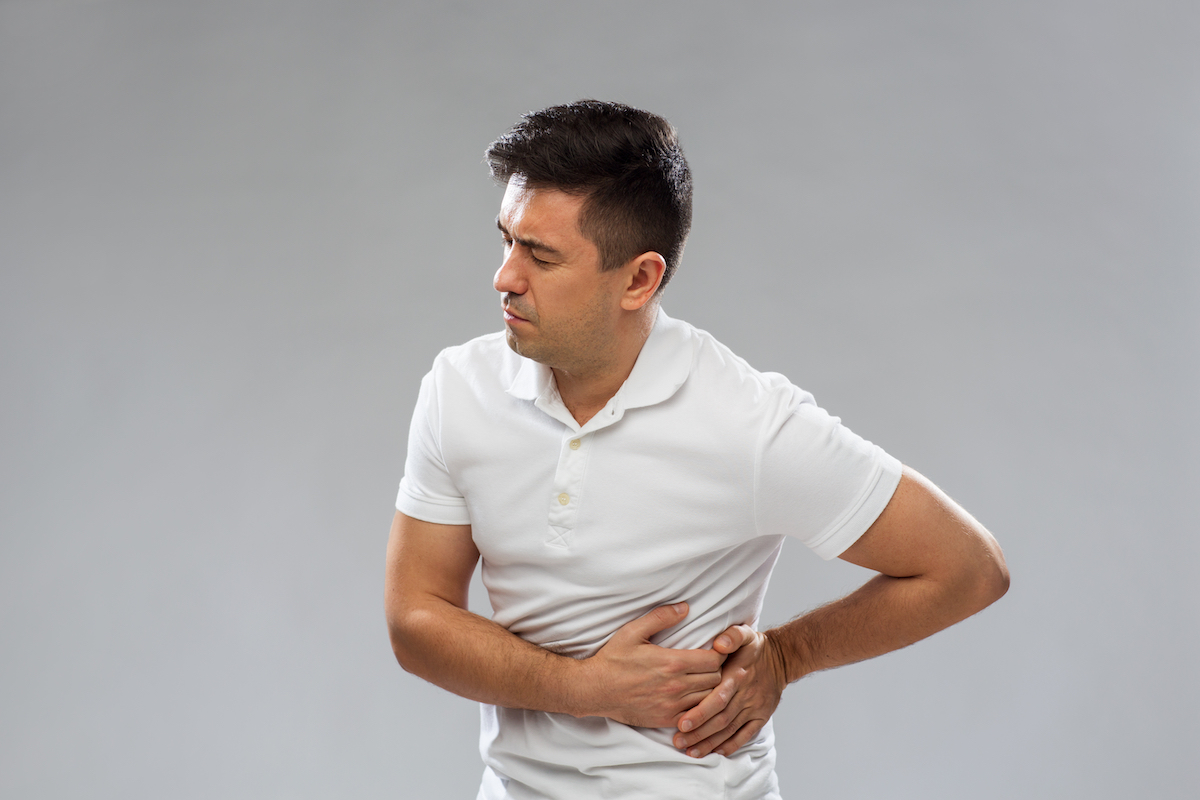
If it hurts in your mid-back region on either side of your body, it could be a pulled muscle — or something more serious.
Back pain is common, with as many as 8-10 people experiencing it at some point in their lives. But what does it mean if you’re having a specific type of discomfort called flank pain? Your flanks are the areas around the sides of your body from your upper abdomen to your back. If you’re having discomfort in this region, either as right or left flank pain, the cause may be one of the following conditions.
1. Degenerative disc disease
One of the most common reasons for flank pain is the degeneration of the squishy discs that cushion the 26 vertebrae, or bones, of your spine. As you get older, the discs can compress and cause pain. They can even rupture and bulge out, which you may have heard called a herniated disc or a slipped disc.
“When the disc degenerates, the space where the nerves exit the spine becomes narrow, and the joints can sometimes become compressed,” explains Christopher C. Ornelas, MD, a spine specialist at Keck Medicine of USC and assistant professor of clinical orthopedic surgery at the Keck School of Medicine of USC. “This causes irritation of the nerves, which can lead to pain that radiates to the flank.”
If your symptoms and physical exam suggest that you may have degenerative disc disease or a herniated disc, your doctor will recommend imaging tests.
“Often, a routine X-ray is sufficient, but if the pain is persistent or if it is accompanied by weakness, an MRI of the mid or lower spine may be indicated,” Dr. Ornelas says. “Treatment usually involves rest, medicine, physical therapy, spinal injection or, as a last resort, surgery.”
2. Osteoarthritis of the spine
If you have osteoarthritis of the spine, the joint cartilage wears down, which can irritate spinal nerves and cause flank pain, according to Dr. Ornelas.
Osteoarthritis of the spine can sometimes lead to the growth of bone spurs, as well, which can cause another problem called spinal stenosis, in which the spinal canal narrows and the spinal cord and nerve roots can become compressed. Nonsurgical treatment options, such as physical therapy or braces, may relieve symptoms; if not, surgery is an option.
3. Pulled muscle
If you’ve been exercising vigorously or lifting heavy objects — or even just spent a long day working in front of the computer — it’s also possible you pulled a muscle.
“It’s important to consider that the muscle in the flank area can sometimes be pulled and irritated with activities such as lifting, bending or twisting, and sometimes it can become irritated just by sitting for prolonged periods of time,” Dr. Ornelas says.
4. Kidney issues
It’s also possible your flank pain has nothing to do with your back at all. Your kidneys are located on each side of your spine, behind your rib cage, so they can also be the cause of flank pain. One of the main symptoms of kidney stones, for example, is sharp pain that starts in your back and side.
Kidney infections, which can happen when a urinary tract infection moves up from your bladder to your kidneys, can also cause flank pain. In addition to flank pain, you may have a fever, chills, painful urination or nausea.
5. Shingles or other conditions
Flank pain that is accompanied by a rash on one side of your body can be a sign of shingles, which is caused by the varicella-zoster (chicken pox) virus. Liver disease or gastrointestinal problems may also cause pain in your flank.
If you have flank pain that doesn’t go away, is severe or is accompanied by other symptoms, it’s a good idea to see your doctor.
Topics
